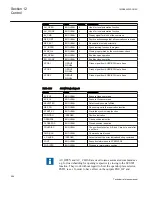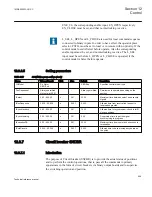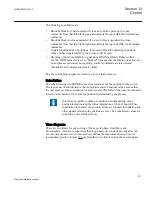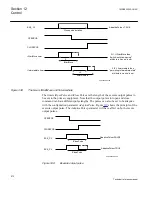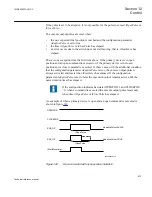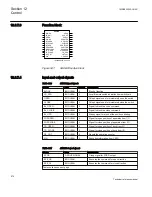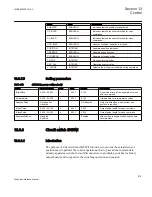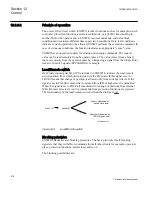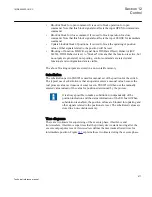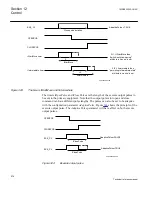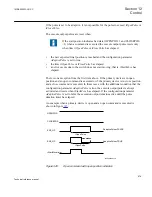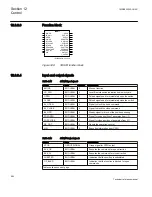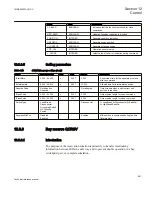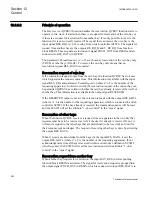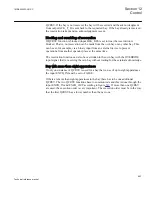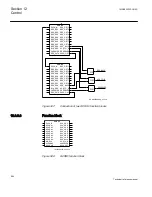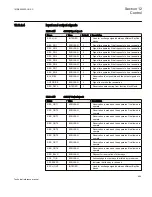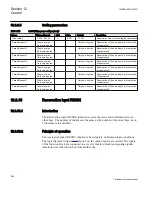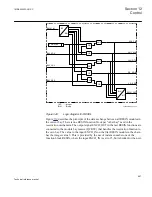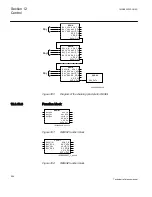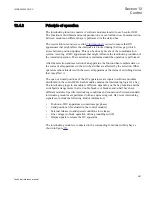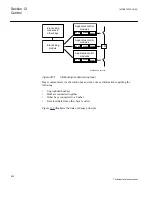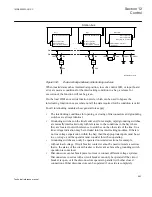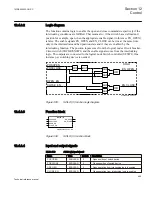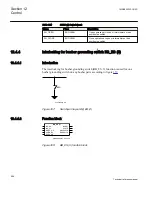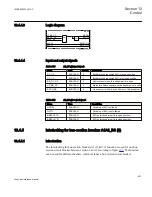
12.3.9.2
Principle of operation
The Bay reserve (QCRSV) function handles the reservation. QCRSV function starts to
operate in two ways. It starts when there is a request for reservation of the own bay or
if there is a request for reservation from another bay. It is only possible to reserve the
function if it is not currently reserved. The signal that can reserve the own bay is the
input signal RES_RQx (x=1-8) coming from switch controller (SCWI). The signals for
request from another bay are the outputs RE_RQ_B and V_RE_RQ from function
block RESIN. These signals are included in signal EXCH_OUT from RESIN and are
connected to RES_DATA in QCRSV.
The parameters
ParamRequestx (x=1-8)
are chosen at reservation of the own bay only
(TRUE) or other bays (FALSE). To reserve the own bay only means that no
reservation request RES_BAYS is created.
Reservation request of own bay
If the reservation request comes from the own bay, the function QCRSV has to know
which apparatus the request comes from. This information is available with the input
signal RES_RQx and parameter
ParamRequestx
(where x=1-8 is the number of the
requesting apparatus). In order to decide if a reservation request of the current bay can
be permitted QCRSV has to know whether the own bay already is reserved by itself or
another bay. This information is available in the output signal RESERVED.
If the RESERVED output is not set, the selection is made with the output RES_GRTx
(where x=1-8 is the number of the requesting apparatus), which is connected to switch
controller SCSWI. If the bay already is reserved the command sequence will be reset
and the SCSWI will set the attribute "1-of-n-control" in the "cause" signal.
Reservation of other bays
When the function QCRSV receives a request from an apparatus in the own bay that
requires other bays to be reserved as well, it checks if it already is reserved. If not, it
will send a request to the other bays that are predefined (to be reserved) and wait for
their response (acknowledge). The request of reserving other bays is done by activating
the output RES_BAYS.
When it receives acknowledge from the bays via the input RES_DATA, it sets the
output RES_GRTx (where x=1-8 is the number of the requesting apparatus). If not
acknowledgement from all bays is received within a certain time defined in SCSWI
(
tResResponse
), the SCSWI will reset the reservation and set the attribute "1-of-n-
control" in the "cause" signal.
Reservation request from another bay
When another bay requests for reservation, the input BAY_RES in corresponding
function block RESIN is activated. The signal for reservation request is grouped into
the output signal EXCH_OUT in RESIN, which is connected to input RES_DATA in
Section 12
1MRK505222-UUS C
Control
682
Technical reference manual
Summary of Contents for Relion 670 series
Page 1: ...Relion 670 series Line differential protection RED670 ANSI Technical reference manual...
Page 2: ......
Page 40: ...34...
Page 50: ...44...
Page 60: ...54...
Page 126: ...120...
Page 384: ...378...
Page 496: ...490...
Page 556: ...550...
Page 602: ...596...
Page 620: ...614...
Page 794: ...788...
Page 864: ...858...
Page 988: ...982...
Page 998: ...992...
Page 1084: ...1078...
Page 1164: ...1158...
Page 1168: ...1162...
Page 1220: ...1214...
Page 1230: ...1224...
Page 1231: ...1225...

